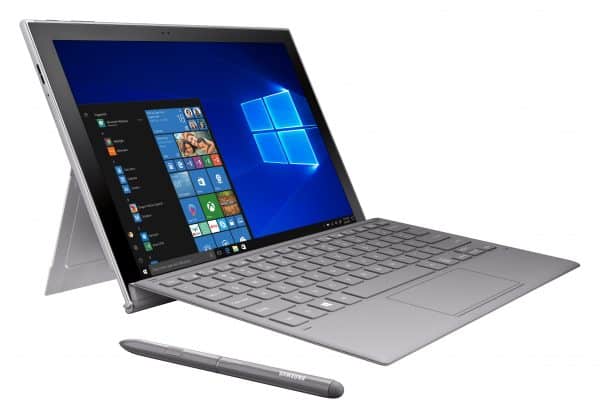Today, Samsung Eelctronics has once again added a new addition to its mobile lineup, with which the company continues to take on Microsoft and its Surface Pro. The Samsung Galaxy Book2 is a Windows two-in-one that works as a tablet on the one hand, but can also be transformed into a laptop with the included accessories.
Thus, the 12-inch Galaxy Book2 is equipped with a kickstand that can be set as the user likes. The kickstand is also similar to that of the Microsoft Surface Pro. Samsung also comes with a removable keyboard and an S Pen as standard. The S Pen is the same as the Samsung Galaxy Note 9.
Specifications and software
The Galaxy Book2 features a 12-inch pixel with 2,160 by 1,440 pixels, with an aspect ratio of 3:2. Samsung has also built in a Qualcomm Snapdragon 850 processor, which is slightly more powerful than the Qualcomm processor that is built into Note 9. The processor also has four gigabytes of working memory, 128 gigabytes of storage capacity and a battery that Samsung believes should be able to last all day. In fact, the battery should last up to 20 hours when it is fully charged.
The Galaxy Book2 also has two cameras. The first one is a five megapixel sensor above the screen. On the back you’ll find an eight megapixel sensor, as well as a fingerprint scanner. This sensor gives the user the option of logging in with Windows Hello – a Windows 10 functionality that allows people to unlock their biometric device.
When it comes to software, the Galaxy Book2 runs on Windows S Mode. This is a feature that restricts the user to downloading software from the Windows Store. The device is therefore safer, but its functionality is more limited because not all programs can be found in the Store.
The Galaxy Book2 will be available in the United States on 2 November and will cost 999 dollars.
This news article was automatically translated from Dutch to give Techzine.eu a head start. All news articles after September 1, 2019 are written in native English and NOT translated. All our background stories are written in native English as well. For more information read our launch article.